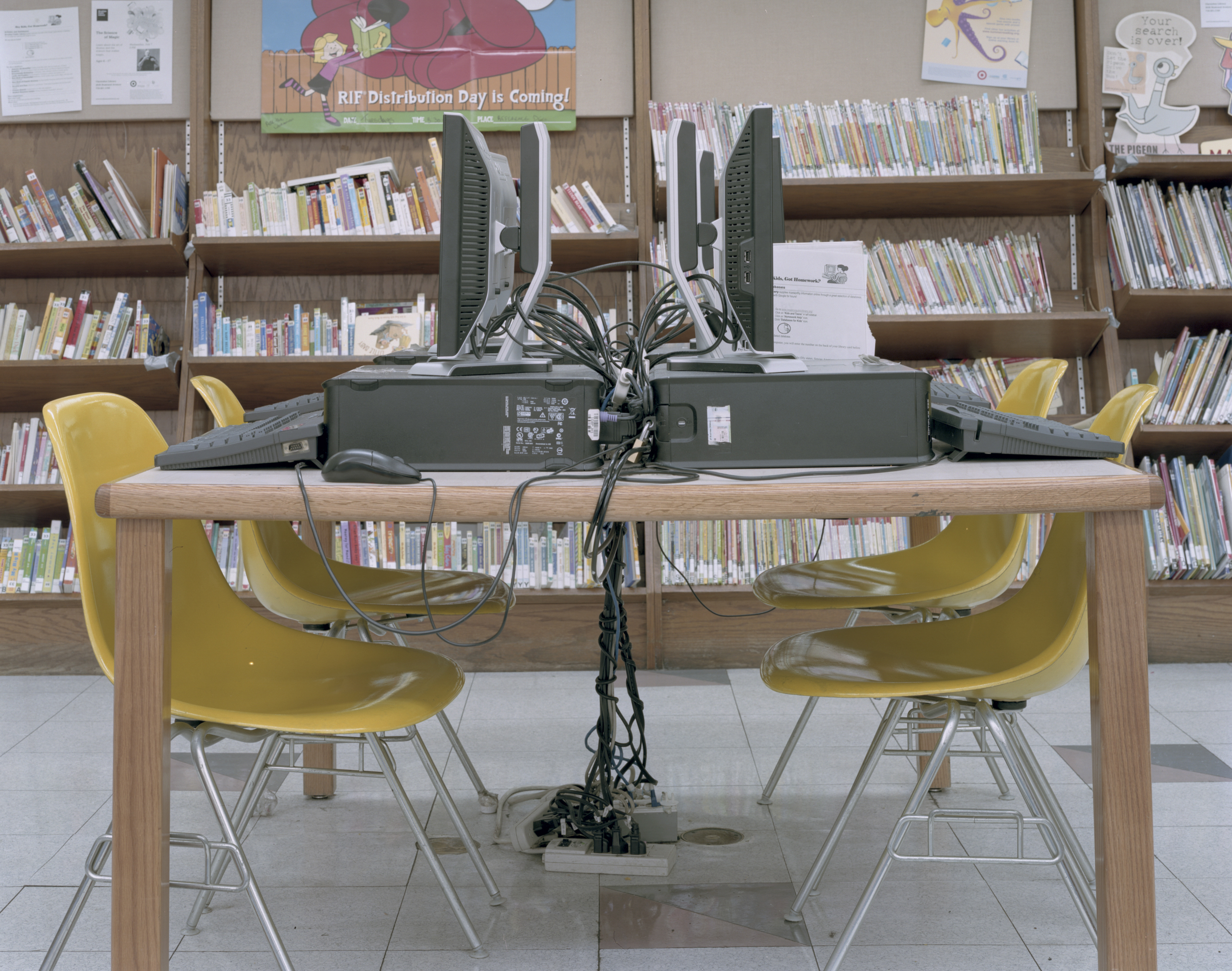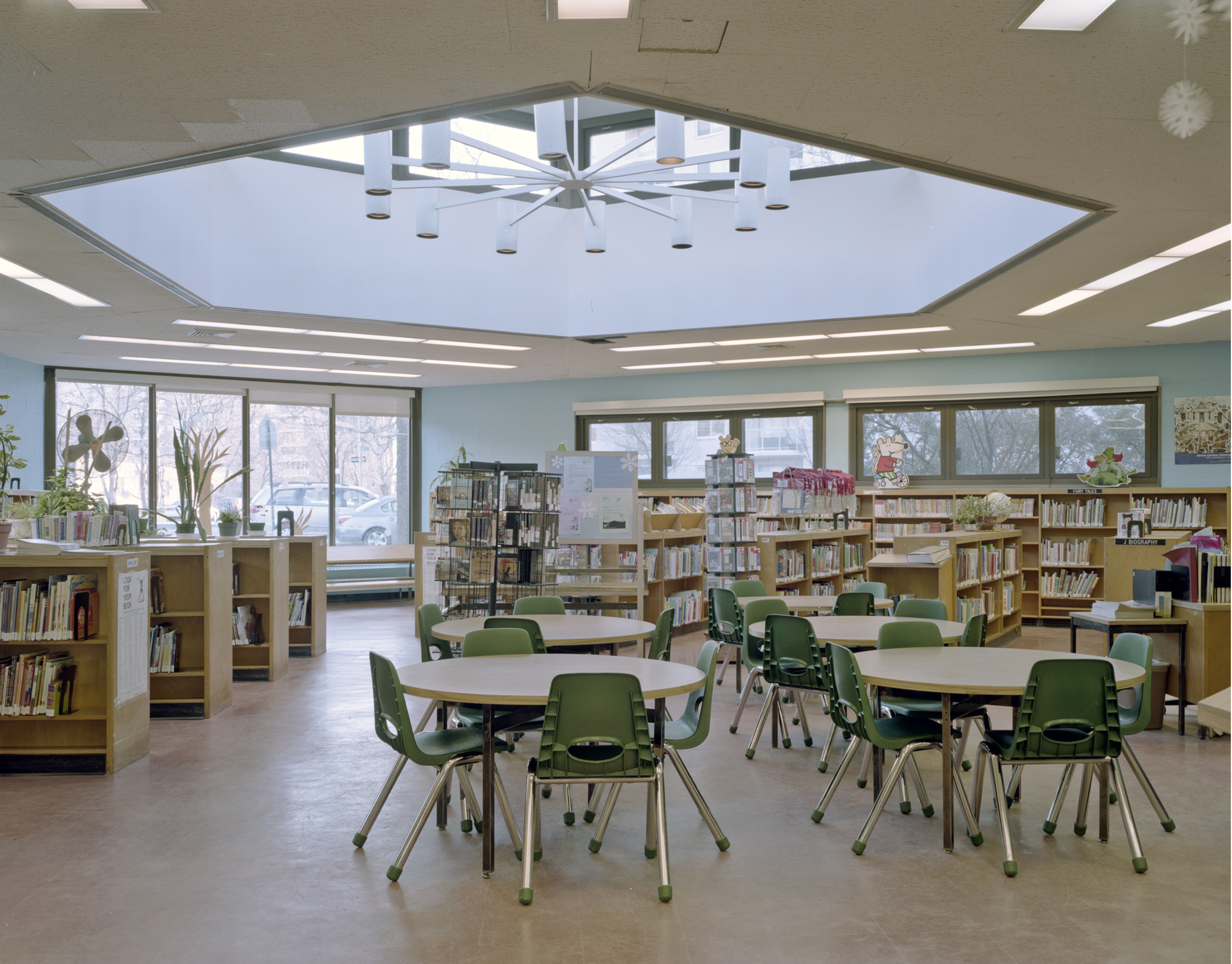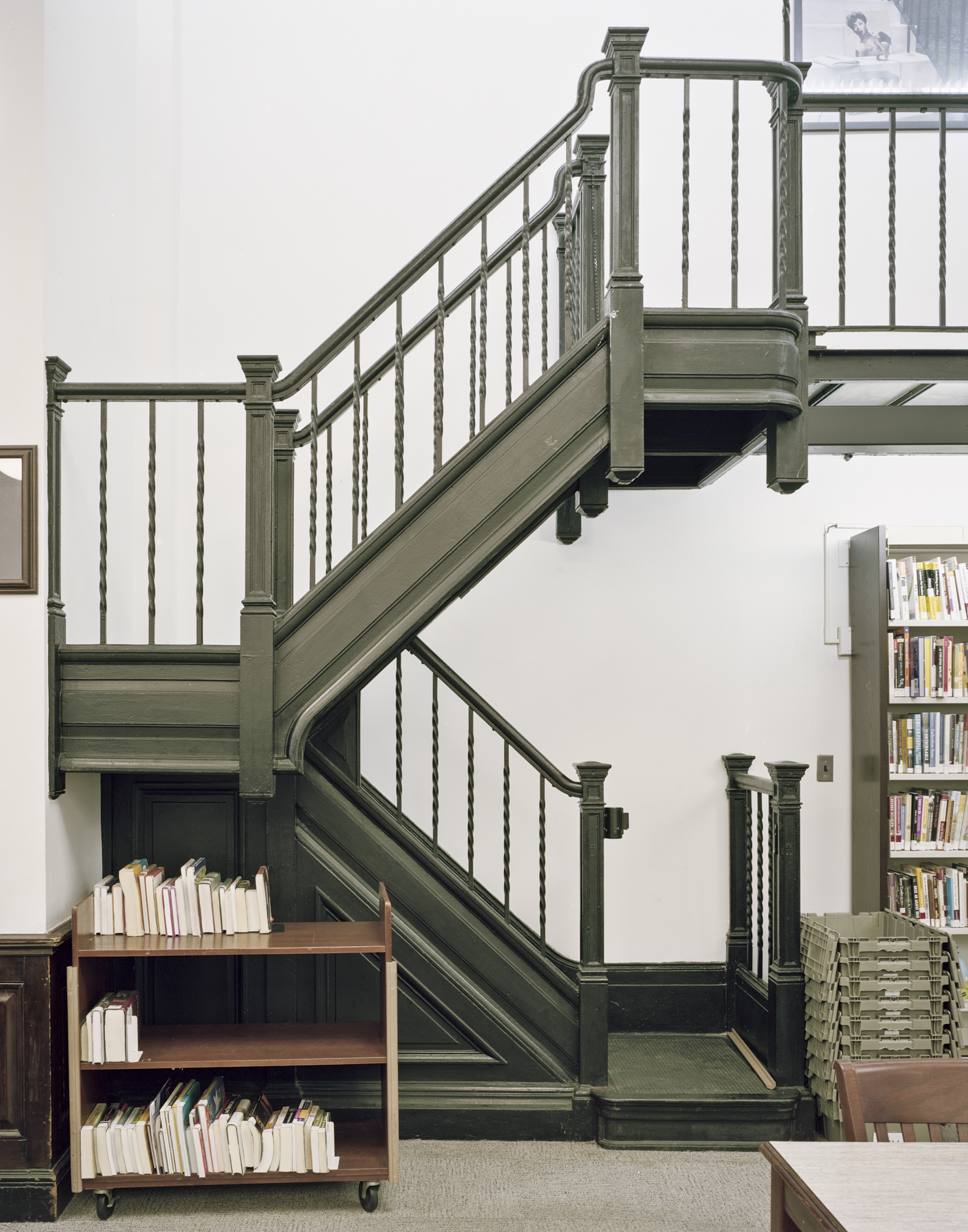by Meghan Edwards
To hear architectural photographer Elizabeth Felicella talk about the eight-year project that culminated in the Center for Architecture’s current exhibition “Reading Room: A Catalog of New York City’s Branch Libraries” is almost like traversing a portal to another universe – it’s time travel, mixed with hope, insight, and nostalgia. New York-based Felicella, whose commissioned work appears regularly in design press around the world, truly lived and breathed the often overlooked trope of public branch library architecture for nearly a decade, visiting each one in the early morning hours before it opened to the public. The result is more than 2,000 photographs documenting all 210 public library branches. They are astounding, especially when compiled into a single gallery. Here, she tells us how the project got its wings, and why “Reading Room” is ultimately about much more than the libraries themselves.
Center for Architecture: What was the genesis or moment of inspiration for the project to photograph all 210 New York City branch libraries? Can you trace the beginning back to one moment over eight years ago?
Elizabeth Felicella: It was the Broad Channel branch library that first inspired “Reading Room.” I often visited Broad Channel while I was working on an earlier project – it’s an unusual branch, a small, pre-fabricated pavilion that I always liked. One day I drove by and it was shuttered. I was heartbroken – my regret at not having photographed it really weighed on me. When I learned that the branch was slated for renovation and not demolition, I took it as a reprieve. From there the project gained momentum quickly. I found that everything I was thinking about in my work came back around to the library.
CFA: Why is it important to display the photographs of all libraries together at once?
EF: We think about libraries as housing collections, but the branch library buildings are in themselves an incredible collection. When all of the photographs are shown at once, we can read the history of the library – each building is an articulation of our changing ideas about what libraries represent and what we expect from them. Because the library photographs are hung in chronological order, the thresholds in their history become legible. They look one way for, say, 10 or 20 years, and then suddenly there is a shift and they become very different buildings embodying very different expectations. I find that fascinating and also instructive. We are definitely in the midst of another shift, and I think it’s instructive to remember that this is the not the first time. Ideas about libraries keep evolving – and as long as libraries exist as buildings, architects will continue giving form to those ideas.
CFA: What was your strategy for visiting the libraries, and how much time did you usually spend with each one?
EF: I traveled by public transportation, and by agreement with each of the library systems, I photographed prior to opening hours. Sometimes I had as long as four hours to shoot, other times it was as short as one hour – it varied over the course of the project and between the systems.
One regret, in terms of strategy, is that I did not time my work so that the exterior views always included the people waiting to get into the library. Only some include lines of people – but, in fact, in every case, there were people waiting to get in as I was leaving. That’s something I wish I had captured.
CFA: How did your photographic process change after you began?
EF: Early on, the process changed several times. Initially, I thought I would shoot 4-by-5-inch, black-and-white film. Then I switched entirely to color film, but was archiving my type 55 black-and-white Polaroids. Then Polaroid went out of business (heartbreaking) and I decided to scan the color negatives in black and white. In the end, I shot color 4-by-5-inch film, which seemed most direct, but it was a convoluted process, and for a while made me very unsure about the work. But as a subject, the library had a way of supporting every problem I encountered in both the process and in my thinking. Working through my approach, I thought a lot about how technologies – whether they are photographic or reading technologies – influence not only how we do things but how we know them, and, maybe most importantly, how we feel we know things. The questions libraries face about digital reading and storage technologies resonate deeply in me; that itself is a big part of the project.
CFA: Has the project changed how you think about libraries?
EF: I certainly think about libraries a lot more than I used to… despite the possibility of burnout with such a long-term project, libraries keep offering something very meaningful: they’ve become a lens for looking at more than the building. One of those things has been time itself. The libraries were an opportunity to document architecture and use – to make the accumulation of use a central part of the record. At the same time, I went into the project knowing that I have a tendency to look backward. Photography is always, on some level, an exercise in preservation. With libraries, that becomes a two-fold risk, since they have an almost irresistible nostalgia about them. Aware of that, nostalgia became a central vein of the project – how to mine nostalgia so that it might become a portal onto history? To what extent I succeeded in that in my photographs is up to each viewer to decide. But in my own thinking, it was yet another instance where the library doubled back around to both mirror and model something that I needed to learn.





